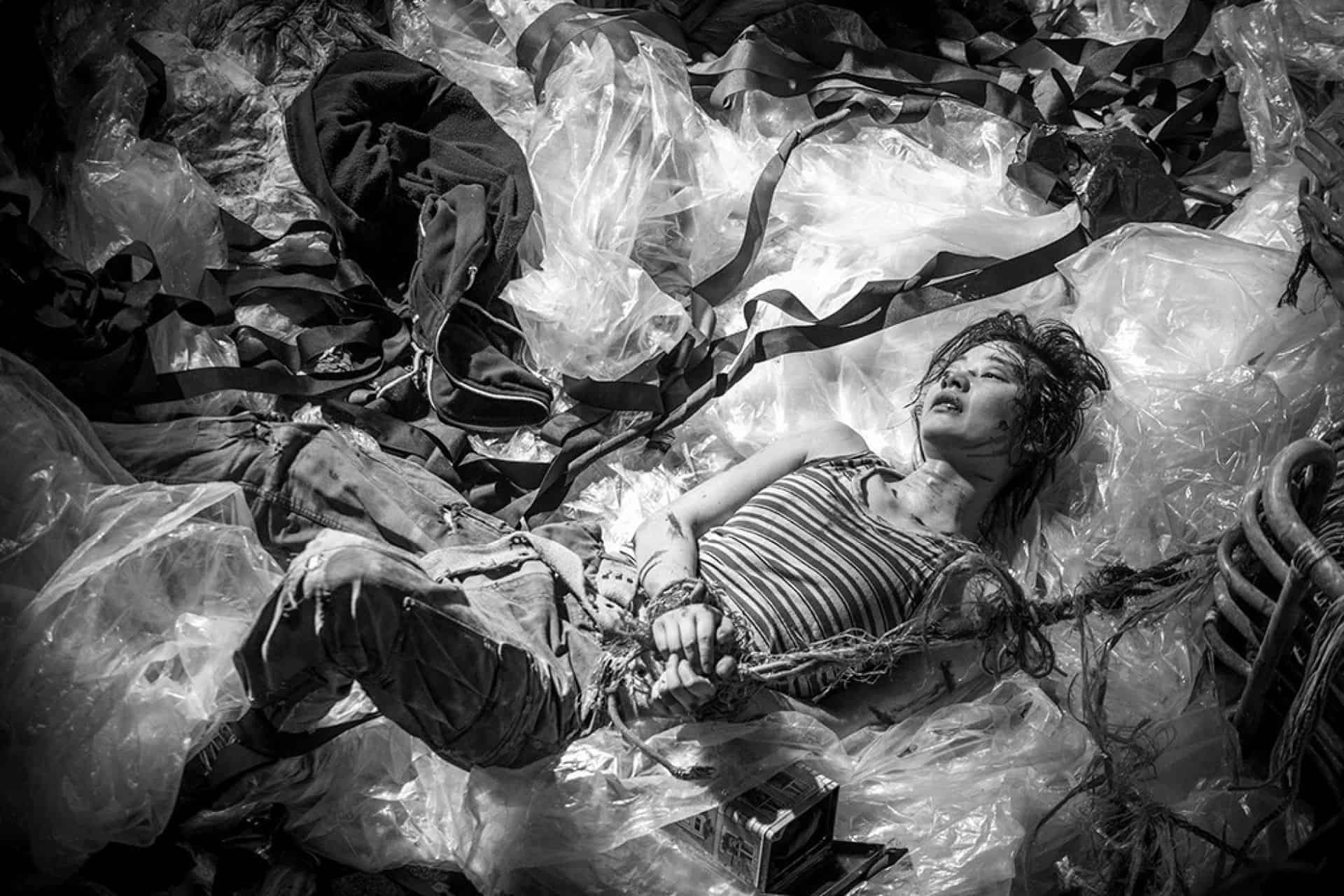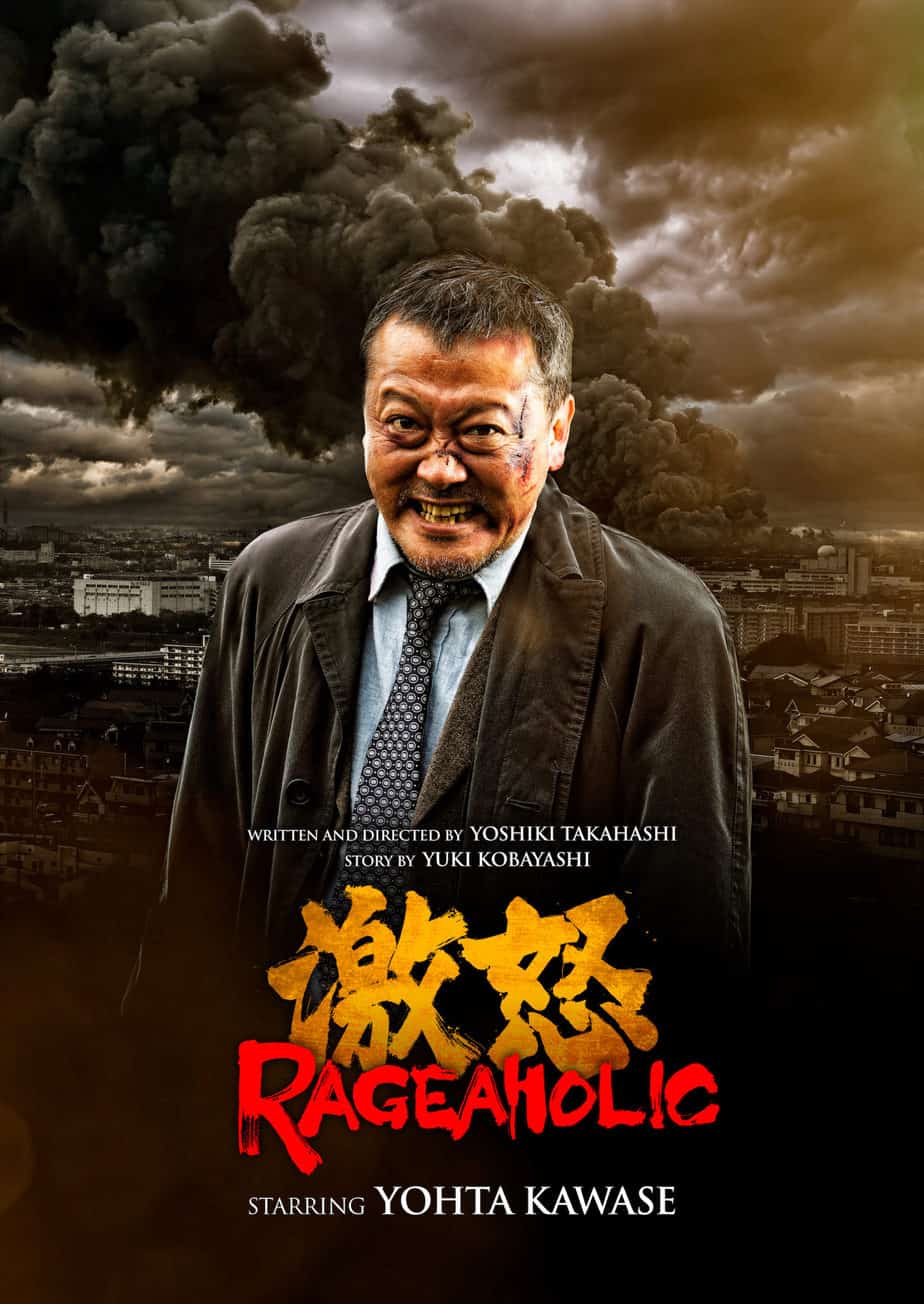A champion of independent cinema around the world, the Raindance Film Festival is the largest of its kind in Europe. It showcases feature, documentary and short films, music videos, web series and virtual reality experiences. Fostering an environment of creativity and inspiration for emerging and established filmmakers, the Festival also offers opportunities for industry collaboration through its co-production and industry days forums. Known for providing an international launch platform for independent films.

The Festival Programme has just been unveiled and we have picked for you the Asians entries:
Room Laundering by Kenji Katagiri (Japan)
A Japanese law requires landlords to reveal when a previous tenant has died in the apartment, and how they met their end. To get around the impact this may have on property prices an unscrupulous gangster sets himself up as a ‘room launderer'. Using a sullen young woman, who sees ghosts, he disrupts this chain of tenancy for the benefit of the landlord. Elaiza Ikeda (“Isle of Dogs”, “The Virgin Psychics”) stars as Miko, a reclusive 20-year-old who sees dead people, in this wonderfully quirky rom-com about coming to terms with loss and choosing to embrace life. Imagine the Oscar-winning “Departures” (2008) as directed by Wes Anderson, and you will have some idea of what to expect from Kenji Katagiri's entertaining debut feature. The film manages to tread a fine line between morbidity and tweeness through charismatic performances from Ikeda and Odagiri, as well as the constant surprise of Katagiri and Tatsuya Umemoto's tightly structured script. Rohan Crickmar

The End of Wind by Fog Forest (China)
Three desperate characters, each in need of salvation, are brought together by chance. One is a white-collar worker desperate to find a meaning to his dull existence. Another, despite being recently released from a ten-year jail sentence, is still persecuted for the crime he never committed, and unable to reintegrate into society. The third is a refugee from North Korea who escapes to China, only to wind up a prisoner of her traffickers. But their encounter only proves that redemption is fleeting in an ultimately unforgiving world. Fog Forest's first feature film is an acknowledged tribute to the works of Jim Jarmusch and Gus Van Sant, and also pays homage to the work of Wong Kar-wai – one of the film's lighter scenes shows two of its characters attending an underground screening of 2046. Reminiscent of Lynne Ramsay's recent You Were Never Really Here, The End of Wind depicts a meaningless world of terminal loneliness and weary cynicism. Shot with an experimental visual flair, the film effortlessly shifts its perspectives of time and space, heightening the alienation of its characters as it explores themes of grieving, depression and existential angst. Marc David Jacobs
I Am Here by Vifill Prunner (Hong Kong)
Set in Southeast Asia “I Am Here” tells a story about a couple of strangers that run away to paradise in search of a new start in life.
A Crimson Star by Aya Igashi (Japan)
Up-and-coming debut director Aya Igashi conveys the bond between two lonely girls in a time of abuse and depression. Yo is a timid school girl who befriends her peaceful nurse Yayoi when she is hospitalised. They meet again under different circumstances in a dark car park, where a visibly changed Yayoi earns money as a prostitute. Depressed, Yayoi initially rejects Yo's appeals to revive their bond. Nevertheless Yo shows up to her house, determined to stay for the summer. As her mother's partner turns increasingly violent towards, it's clear that Yayoi is all Yo has got. Their friendship becomes complicated when Yayoi also develops feelings for a paraglider, offering her a chance to escape the real world and roam the skies. Igashi continuously asks the question: can Yo and Yayoi fill the holes in each other's hearts? Yo becomes more defensive about Yayoi selling her body, in ways that could even damage her permanently. “A Crimson Star” excels in its melancholic long shots and pained minimalist dialogue, seeping in unspoken hurt. Unravelling layer by layer the sad plights of its protagonists, it is a breath-taking addition to Japan's avant-garde film scene. Ellie Steiner

Feelings To Tell by Wen Li (China)
Yuan Jiang, a young painter, journeys into the land of the Taogu Mountains and encounters its isolated inhabitants. He is moved by their worship of the Gods, and particularly that of the kind Bai and his mute, wild, carefree, and beautiful daughter Jiu'er. “Feelings To Tell” captures Jiu'er and Yuan's relationship: how he is fascinated by the rituals she carries out as much as she is by his paintings of their landscapes. But beneath their friendship lies the truth that she must prepare for her transition into a mountain goddess. “Feelings To Tell” has particularly gorgeous cinematography, capturing the freshness and luscious beauty of the mountains. We also see the grace of Jiu'er's movements as she prepares her dance for the ceremony. This contrasts with the washed-out greys and whites of Yuan's city as he returns to his dying grandfather. The film plays with the concepts of running out of time and timelessness, and the cross-over this young painter experiences between the secular world and the one of worship, between the mortal and the immortal. Ellie Steiner
Love At Least by Kosai Sekine (Japan)
Yasuko is one very unusual young woman. Aside from a sleep disorder that dominates her days, she also suffers from severe manic depression that sees her shrieking, snarling, and spitting out insults. Her reclusive lifestyle is facilitated by her boyfriend Tsunaki, who seems happy enough to roll with her (mercifully figurative) punches. But will their relationship survive the arrival of his ex-lover? The emotions displayed in “Love At Least” might seem extreme to the uninitiated, but fans of Japanese cinema will recognise certain tropes. One of Tsunaki's colleagues says she always wanted to work in manga, and surely there is something of that tradition in Yasuko's fierce energy. By contrast, the long periods she spends in bed are shot in a slow, unhurried way, providing a realistic look at what it's like to be imprisoned by your own sleeping pattern. In this marvellously twisted love story, perhaps the most classically romantic character is the city itself, which burns bright with neon lights and smoulders with dark alleys and shuttered shopfronts. Against this urban backdrop, the action seems even wilder; my best advice is to make like Tsunaki and let it overwhelm you. Abigail Smith
Matsuchiyo – Life of a Geisha by Ken Nishikawa (Japan)
Geisha are among the most recognisable cultural symbols of Japan, and yet Western understanding of what they do is still very limited. Few are better placed to tell an audience than Matsuchiyo, a geisha for six decades who has no intention of retiring any time soon. Matsuchiyo tells her story in her own words, from a wartime childhood to the present-day, discussing how both she and the profession have changed in that time. The documentary is directed by her son, Ken Nishiwara, who returns to Raindance after presenting his debut feature, “Ghostroads: A Japanese Rock‘n' Roll Ghost Story”, at the 2017 edition of the festival. He features heavily in the film, talking about his mother and explaining what it was like to grow up the child of a geisha. In a job where work and home life are so inextricably interlinked – and where to discuss your personal life is the height of unprofessionalism – the insights that only a mother and son can bring to an understanding of the interplay between the two is what makes “Matsuchiyo – Life of a Geisha” truly unique. Lucy Rosenstiel
Bad Poetry Tokyo by Anshul Chauhan (Japan)
Jun is a hostess in a Tokyo nightclub, saving dirty money to one day move to Los Angeles to become an actress. Having suffered abuse from her clients and a violent betrayal from her lover, she makes a return to her quiet hometown to escape the adrenaline of Tokyo. Finally some respite is found in old friends, and a family she has not spoken to in five years. But home is full of unpleasant truths and discomfort, and how long can she stay away from the darkness she left behind in the city? The debut feature film from Indian writer/director Anshul Chauhan is a poignant study into the emotional trauma of Jun, displaying incredible skill and sensitivity. Every aspect of the cinematography is carefully crafted to increase the psychological pressure; with tight framing, dramatic lighting, and even a 4:3 aspect ratio presenting a prison of existence. Shuna Iijima (Jun) earned Best Actress for her heart-wrenching performance at Osaka Asian Film Festival. Her violent outbursts and deafening silences are both unforgivingly hard to watch, with anguish never far away from bubbling over into the extreme. A flawless feature debut to join the beloved canon of Japanese indie cinema. Harry Løvstrøm
Fullmoon by Yukihiro Shoda (USA / Japan)
A compilation of intertwined snippets featuring various characters of diverse backgrounds from different parts of the world. Each of them is experiencing their unique lives, yet there are similarities between them. The stories are tied together with the underlying message that we are all connected.

Selfie Stick (Short) by Rory O'Donnell (Japan)
Taking selfies around Tokyo can lead to some strange attachments.














